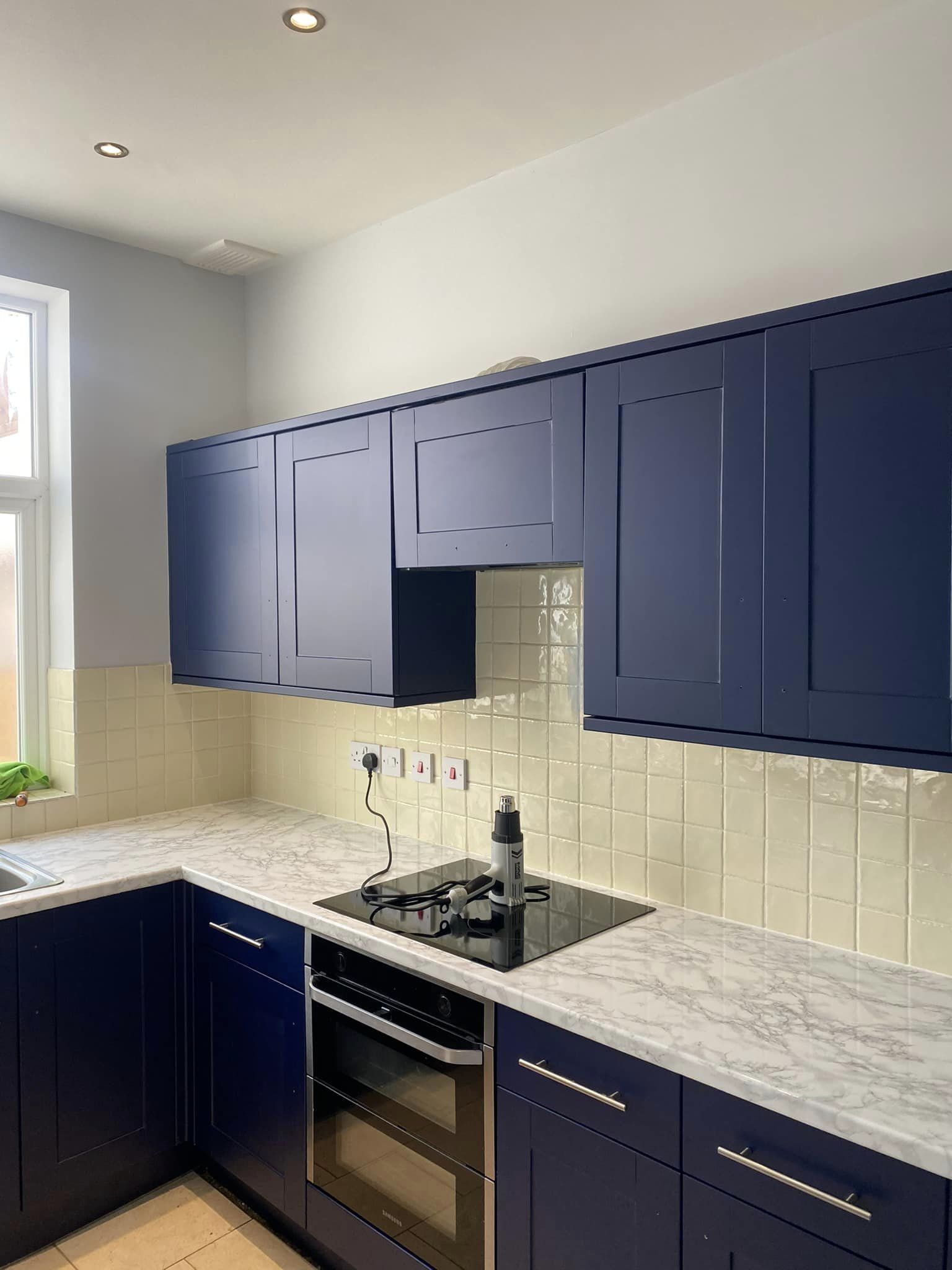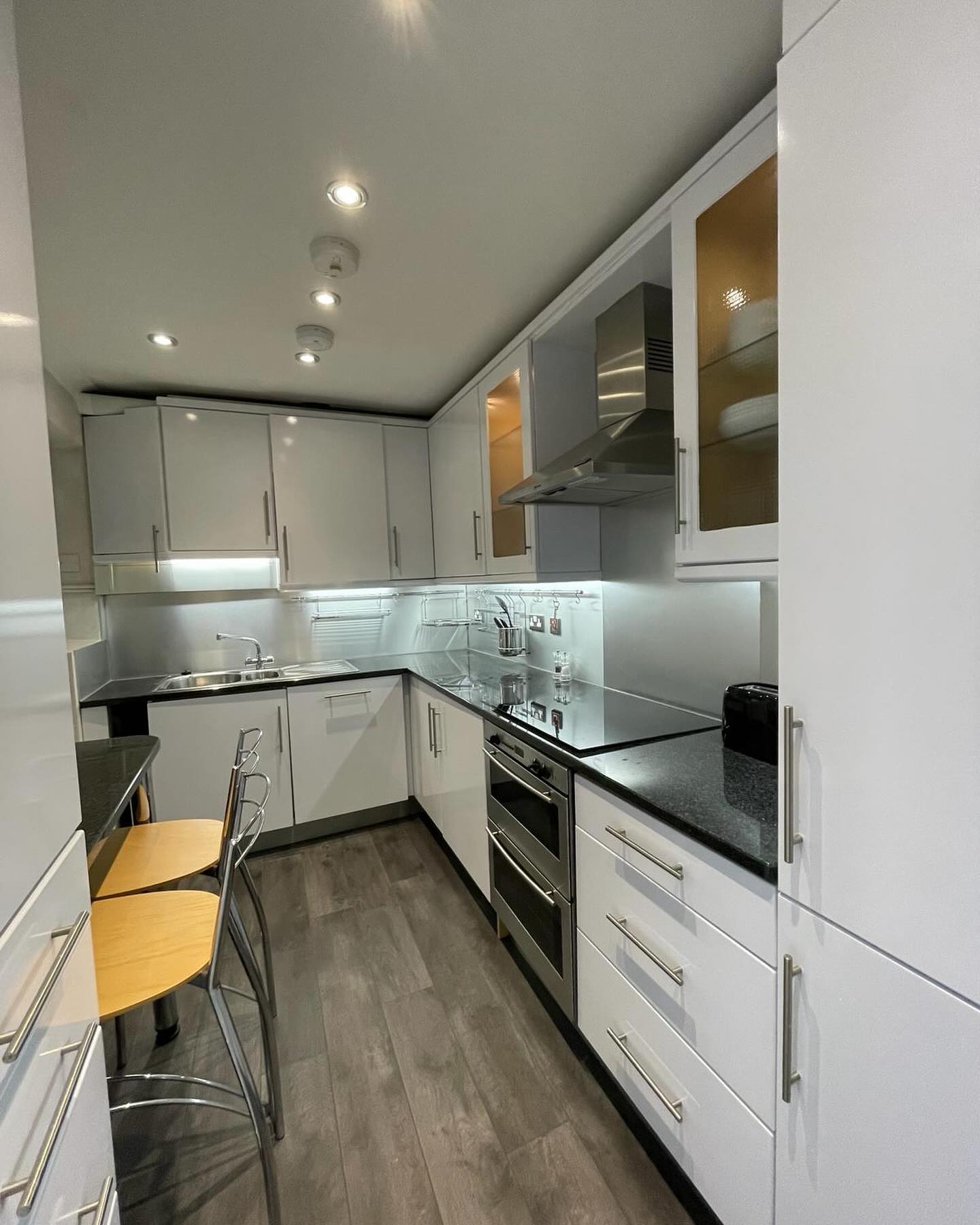Vinyl wrap has become a popular, cost-effective solution for updating kitchen cabinets without undergoing a full renovation. But what if you want to remove the wrap down the line? Whether the vinyl wrap is damaged, outdated, or you’re simply ready for a new look, removing it can be a bit tricky. Done incorrectly, the process might damage the finish of your kitchen doors. However, with the right approach, you can safely remove the vinyl wrap and prepare your cabinets for a fresh update.
In this post, we’ll cover step-by-step instructions on how to remove vinyl wrap, tips for avoiding damage, and when it might be best to call in a professional.
Can Vinyl Wrap Be Removed from Kitchen Cabinets?
Yes, vinyl wrap can be removed from kitchen cabinets, but the process requires care and patience. The vinyl is adhered to the cabinet surfaces with strong adhesives, and removing it without caution could result in damage to the cupboard door’s finish or underlying material. If you’re willing to follow the right steps, however, you can successfully remove it yourself.
Step-by-Step Guide for Removing Vinyl Wrap
Here’s how you can safely remove vinyl wrap from your kitchen cabinets:
1. Use Heat to Loosen the Adhesive
Heat is your best friend when removing vinyl wrap. It softens the adhesive, making it easier to peel off the wrap without damaging the surface underneath. A hair dryer or heat gun works well for this task, but be sure to use them carefully to avoid overheating or burning the material.
- How to do it: Set your hair dryer or heat gun on a low to medium setting and direct the heat toward a section of the vinyl wrap. Hold the heat source a few inches away to avoid causing damage.
2. Peel from a Corner
Once the vinyl wrap is warmed up, it’s time to start peeling. The easiest way to begin is by lifting a corner of the wrap.
- How to do it: Use a plastic scraper or something with a thin edge, like a credit card, to gently lift one corner of the vinyl wrap. Avoid using anything sharp, as it could scratch or gouge the cabinet surface.
3. Continue Applying Heat While Peeling
As you peel the vinyl wrap off, continue to apply heat to soften the adhesive further, making the removal process smoother.
- How to do it: With the corner lifted, continue to direct heat at the area while you slowly peel the vinyl away. Work gradually, pulling at a steady pace to prevent tearing the wrap or leaving small pieces behind.
4. Clean Off Adhesive Residue
Once the vinyl wrap is removed, you may find some sticky residue left behind from the adhesive. This can be cleaned off with common household solvents.
- How to do it: Use rubbing alcohol, vinegar, or a specialized adhesive remover to clean away the remaining residue. Apply the solvent to a soft cloth and gently rub the surface until all adhesive is gone. Be cautious not to use anything too harsh, which could damage the finish of your cabinets.
5. Be Careful with Heat
While heat is necessary for loosening the adhesive, you must be careful not to overheat the surface, as this could cause damage or discoloration to the cabinet doors.
- How to do it: Always use a moderate heat setting and keep the hair dryer or heat gun moving so that no single spot gets too hot. If you’re concerned about overheating, practice on an inconspicuous part of the cabinet first.
When to Call a Professional
If the vinyl wrap is stubborn or you’re worried about damaging the cupboards, it’s a good idea to call in a professional. A skilled installer or repair specialist can remove the vinyl wrap cleanly without damaging your kitchen units. They may also recommend replacing the wrap with a new design, giving your kitchen a refreshed look without the hassle of a full renovation.
How Long Does Vinyl Wrap Last?
Vinyl wrap is durable, but its lifespan depends on the environment and usage. In kitchens with a lot of direct sunlight, the vinyl wrap can fade over time and may become brittle, leading to peeling. Similarly, high moisture levels can cause the wrap to lift. Generally, high-quality vinyl wrap will last between 5 and 10 years with proper care, but it may wear out sooner in high-use or exposed areas.
Kitchen Door Wrapping Costs in 2024
Vinyl wrap continues to be a budget-friendly option for updating kitchen cabinets in 2024. The cost of wrapping kitchen doors typically ranges from £40 to £150 per door, depending on factors like the size, type of wrap, and professional installation fees. While vinyl wrap offers a cheaper alternative to replacing the entire cabinet, it’s essential to remember that, in some cases, removal or replacement may be necessary after several years of use, especially if the vinyl starts to peel or degrade.
Conclusion
Vinyl wrap removal from kitchen cabinets is possible with the right tools and technique. By using heat, carefully peeling, and cleaning off adhesive residue, you can safely remove the wrap without damaging your cabinets. However, if the process feels overwhelming, or you encounter stubborn vinyl, it’s best to call a professional to ensure a clean and smooth removal.
Whether you’re looking to remove or replace vinyl wrap, understanding the process and costs involved will help you make the right decision for your kitchen’s style and longevity. With proper care, vinyl wrap can be a cost-effective and attractive solution to modernize your kitchen, but when it’s time for a change, following these steps can ensure the transition goes smoothly.


